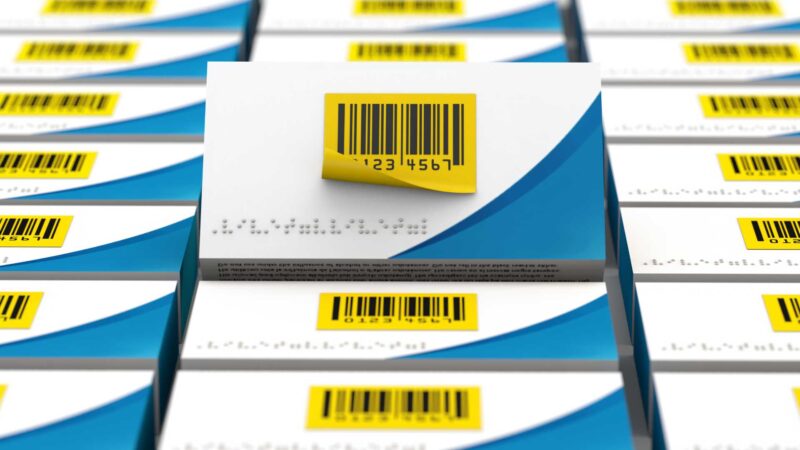Introduction
Given the complex landscape of the pharmaceutical industry, ensuring the safety and authenticity of medications is extremely important. Track and trace technology has emerged as a pivotal solution, offering a comprehensive approach to monitoring and recording the movement of pharmaceutical products throughout the supply chain. From the manufacturing facility to the hands of the patient, track and trace provides real-time visibility, addressing challenges such as counterfeiting, drug diversion, supply chain inefficiencies, and product recalls.
Understanding Track and Trace
Definition and Scope
Track and trace refer to both the technology and process that enable the meticulous monitoring and recording of pharmaceutical product movement within the supply chain. This includes every step, from the initial manufacturing of the product to its distribution and eventual dispensing to patients. The core objective is to establish a robust system that ensures the authenticity, safety, and efficacy of pharmaceuticals.
Counteracting Challenges
Counterfeiting
Counterfeit drugs present a severe threat to public health, as they can be ineffective or, worse, harmful. Track and trace systems significantly contribute to mitigating this risk by making it challenging for counterfeiters to infiltrate the supply chain. The uniqueness of serialized codes assigned to each pharmaceutical unit acts as a powerful deterrent against the production and distribution of counterfeit medications.
Drug Diversion
Prescription drugs sometimes find their way from legitimate channels to illegal markets. Track and trace systems play a crucial role in identifying and preventing such diversions by maintaining detailed records of product movement. This transparency helps authorities and pharmaceutical companies detect irregularities and take necessary actions to curb unauthorized distribution.
Supply Chain Inefficiencies
Optimizing the pharmaceutical supply chain is a constant challenge. Track and trace technologies offer real-time data on product location and status, improving supply chain visibility and efficiency. This not only reduces inventory costs but also enhances product availability and optimizes delivery times, addressing one of the persistent challenges faced by the industry.
Product Recalls
In the unfortunate event of a product recall, swift identification and location of affected products are crucial. Track and trace systems excel in this scenario by quickly pinpointing the products that need to be removed from circulation. This minimizes the risk of harm to patients and underscores the importance of a well-implemented track and trace system in pharmaceutical operations.
How Track and Trace Works
Key Components
The efficacy of track and trace systems hinges on two key components:
Serialization
Each individual unit of a pharmaceutical product, whether it be a pill, vial, or bottle, is assigned a unique serial number. This serial number is prominently displayed on the product packaging and encoded in a two-dimensional barcode. Serialization ensures the individual traceability of each unit throughout its lifecycle.
Transaction Reporting
Every time a pharmaceutical product changes hands within the supply chain, a transaction report is generated and recorded in a central database. This database contains comprehensive information about the product, its unique serial number, and details about the time and location of each transaction. This transaction reporting mechanism is critical for establishing a reliable and transparent audit trail.
Benefits of Track and Trace in Pharma
Improved Patient Safety
The foremost benefit of track and trace systems is the improvement in patient safety. By mitigating the risk of counterfeit and diverted drugs, these systems play a pivotal role in safeguarding patients from potentially harmful medications.
Enhanced Regulatory Compliance
As regulatory standards for drug safety and traceability become increasingly stringent, track and trace systems help pharmaceutical companies stay compliant. These systems provide the necessary documentation and transparency to meet regulatory requirements and ensure adherence to industry standards.
Increased Supply Chain Efficiency
The real-time data insights provided by track and trace systems empower pharmaceutical companies to optimize their supply chain operations. This optimization results in reduced costs, improved product availability, and enhanced overall efficiency.
Improved Brand Reputation
A robust track and trace system demonstrates a pharmaceutical company’s commitment to product safety and quality. This commitment, in turn, enhances the company’s brand reputation, fostering trust among healthcare professionals, regulators, and patients alike.
Challenges of Track and Trace in Pharma
Implementation Costs
While the benefits of track and trace systems are substantial, their implementation can be a costly affair, particularly for smaller manufacturers. The initial investment in technology, infrastructure, and staff training can pose a significant financial challenge. However, the long-term advantages, including regulatory compliance and enhanced efficiency, often outweigh the initial costs.
Data Security
The vast amount of data generated by track and trace systems is a valuable asset but also a potential target for cyberattacks and other security threats. Ensuring the security and integrity of the data is a critical aspect of implementing track and trace solutions. Companies must invest in robust cybersecurity measures to protect sensitive information from unauthorized access or manipulation.
Integration with Existing Systems
For a track-and-trace system to be effective, seamless integration with existing enterprise resource planning (ERP) and warehouse management systems (WMS) is essential. This integration ensures a continuous and accurate flow of data throughout the entire supply chain. However, the complexity of integrating these systems can be a challenge, requiring careful planning and execution.
The Future of Track and Trace in Pharma
Adoption of Global Standards
As track and trace regulations continue to evolve globally, the adoption of standardized serialization and data exchange practices is becoming imperative. Global standards would facilitate easier compliance for pharmaceutical companies operating in multiple countries, streamlining their track and trace processes.
Integration with Blockchain Technology
Blockchain technology is gaining prominence for its potential to enhance the security and transparency of track and trace systems. The decentralized and tamper-resistant nature of blockchain makes it an ideal candidate for ensuring the integrity of the data recorded in the track and trace process. By leveraging blockchain, the industry can further fortify its defenses against counterfeiting and unauthorized diversions.
Use of Artificial Intelligence (AI)
The future of track and trace is likely to incorporate artificial intelligence (AI) for advanced data analysis. AI can process vast amounts of track and trace data to identify patterns, trends, and anomalies. This capability can be instrumental in preventing counterfeiting and diversion by detecting suspicious activities in real-time. By employing machine learning algorithms, AI can continuously evolve to adapt to new threats and challenges, making it a valuable asset in the ongoing battle against illicit activities in the pharmaceutical supply chain.
Track and trace technology is not just a buzzword in the pharmaceutical industry; it is a vital tool that addresses critical challenges and ensures the safety and integrity of medications. From countering counterfeiting to enhancing supply chain efficiency, the benefits are substantial. While implementation costs and data security remain challenges, ongoing technological advancements, including the integration with blockchain and AI, promise a future where track and trace systems become even more sophisticated and effective.
As regulations tighten and the pharmaceutical industry continues to evolve, the adoption of track and trace systems is not just a choice but a necessity. The commitment to patient safety, regulatory compliance, and supply chain optimization is driving the industry toward a future where every pharmaceutical product’s journey is meticulously monitored and traced, safeguarding the well-being of patients worldwide.






